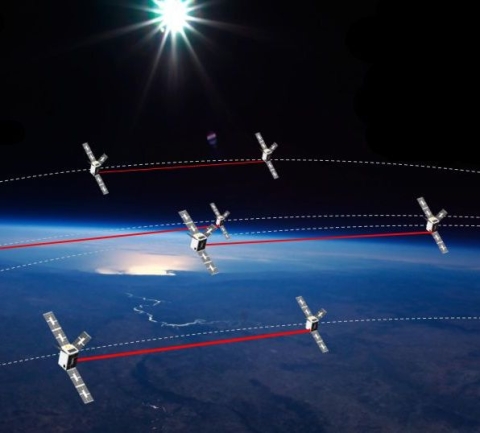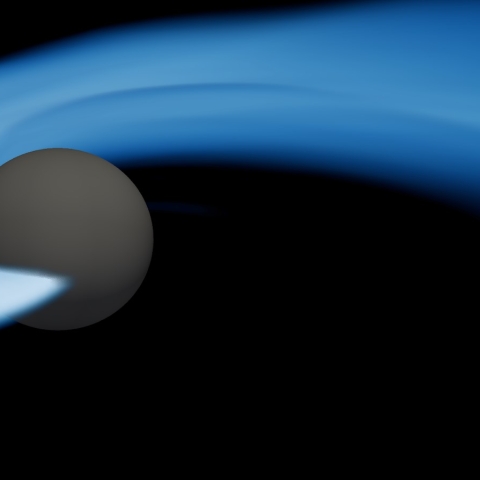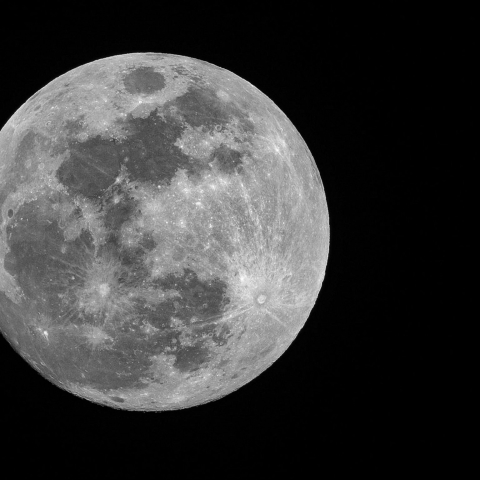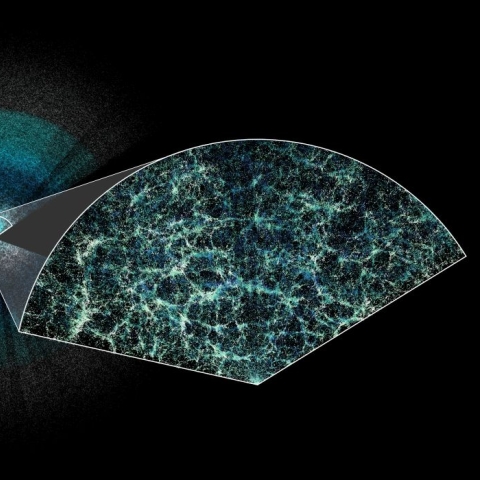

The Space Mission Incubator has been used by experts designing small satellites
22 April 2024
4 min read
Experts designing a ‘swarm’ of satellites to tackle the growing problem of space debris have worked together on the mission concept in the University of Portsmouth’s space mission design facility.
The Space Mission Incubator unites scientists, researchers and industry experts in order to speed up the development of space missions, and give academic-based teams access to the type of expertise that is crucial to early-stage mission design, but can be hard to come by outside of industry.
The project’s aim is to create a formation of small satellites, known as CubeSats, that can measure the effects of atmospheric drag caused by space weather in Earth’s Lower Orbit, which could help better predict collision events. It is being led by the University of Warwick.

The Orbital configuration of the eight ROARS satellites
Dr Lucinda King, Space Projects Manager at the University of Portsmouth’s Institute of Cosmology and Gravitation, said: “There’s a growing space debris problem which is increasing the risk of objects crashing into each other, creating yet more debris and threatening satellite operations. This mission is important for collision avoidance, to reduce the amount of space debris, and to understand the impact of changes in space weather.
“It’s fantastic to use the Space Mission Incubator to advance huge consortium projects like this, which will ultimately better predict how we can keep space clean and safe.”
Engineers from Open Cosmos, In-Space Missions and KISPE worked together with academics from the universities of Portsmouth, Warwick, Northumbria and others over two and a half days in the Space Mission Incubator.

It’s fantastic to use the Space Mission Incubator to advance huge consortium projects like this, which will ultimately better predict how we can keep space clean and safe.
Dr Lucinda King, Space Projects Manager
Dr King added: “We were primarily looking at parts of the mission architecture that related to formation flying because these small satellites will need to fly in a specific configuration in order to get a three-dimensional measurement of atmospheric and magnetospheric parameters, to explore how the atmosphere and magnetosphere affect each other.”
Dr Ravindra Desai, of University of Warwick’s Centre for Fusion, Space & Astrophysics and Principal Investigator for the mission, said: “We have a very complex mission design and this facility enabled us to zero in on the difficult aspects. We are seeking to combine the measurements from over six miniaturised scientific payloads on each of the satellites within the swarm, and really push the boundaries of what is possible with a space mission.”
Revealing the Orbital and Atmospheric Responses to Solar activity (ROARS) is funded by the European Space Agency.
You might also like...
Researchers enable detection of remarkable gravitational-wave signal
5 April 2024
4 minutes

UK Space Agency funding boost for Moon-orbiting satellite
The University of Portsmouth has received a funding boost from the UK Space Agency, after the success of a pilot project to develop a space mission that will place a small satellite in orbit around the Moon.
5 April 2024
5 min read

Scientists announce the most precise measurement of our expanding universe to date
An international team of researchers, including scientists from the University of Portsmouth, has made the largest 3D map of the Universe and measured its expansion over 11 billion years.
4 April 2024
6 min read

